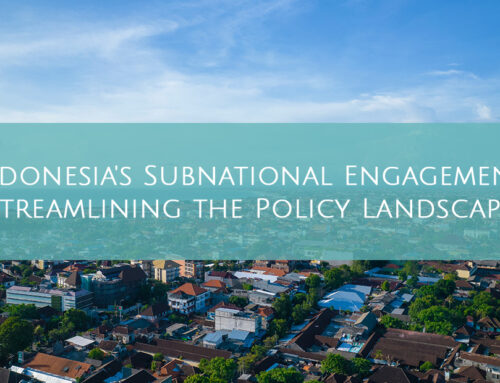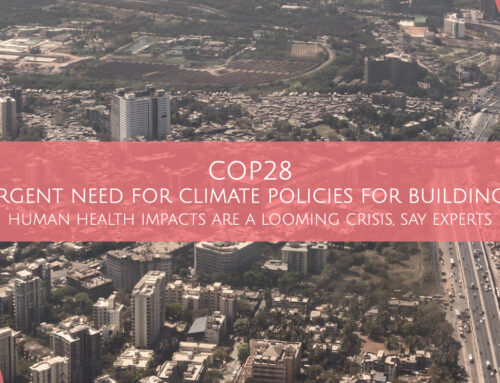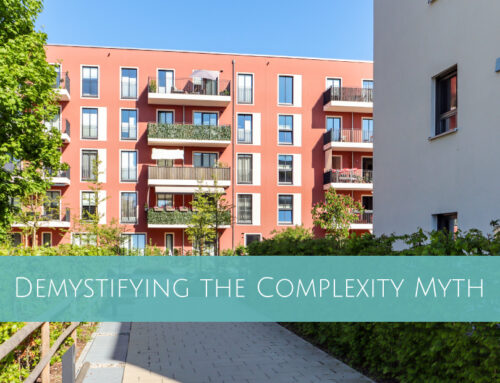Building the path to 1.5°C: What the Paris Agreement Means for Buildings & Construction
The Paris Agreement on Climate Change is a historic achievement for humanity and for the Building Sector. We now have a common legally binding agreement to hold global warming well below 2oC with aspiration to achieve 1.5oC integrated with frameworks for action on resilience and adaptation. And for the first time the Buildings & Construction sector, which is responsible for about 30% of global GHG emissions, 50% of global wealth, and provision of urban habitat for more than 60% of humanity, has been given a mandate and global framework for helping to achieve these goals.
There are at least four key elements of the Paris Agreement that offer critical opportunities for the Buildings & Construction sector. First is the need to raise the level of national ambition, the second is in the need for urgent and ambitious action before 2020, and the third is acknowledgment of cities, civil society and the private sector as critical for driving greater ambition. Fourth, a Global Alliance was initiated at COP21 by 20 nations to mobilize the sector’s significant technology, finance, and policy expertise and sustainable building experience.
Starting with ambition, no less than 91 countries have included elements of commitments, national programs, or projects and plans relating to buildings in their Intended Nationally Determined Contributions (INDCs). And while this is important, we know that that the level of ambition set out in INDCs will lead to a 2.7oC – 3oC rise in global temperatures. Ambition levels need to double in order to achieve the required outcomes of the Paris Agreement, and there is work to be done to ensure all countries have engaged their building sector in ambitious climate actions. Doing so will go along way to bringing the impact of INDC’s well below 2oC.
The Agreement states that GHG emissions should peak “as soon as possible”, but it is well known that GHG emissions must peak globally no later than 2030 in order to hold global warming “well-below” 2oC above pre-industrial levels. As the IPCC and many countries have pointed out, minimizing climate change risks requires holding the 1.5oC limit as our goal. In “emphasizing the enduring benefits of ambitious and early action” the Agreement therefore calls for urgency in enhancing pre-2020 ambition in order to lay the foundations for necessary higher ambition post-2020.
Supporting early action to decarbonize the Building sector must therefore be at the top of the list for countries as they implement the Paris Agreement. The building sector can contribute to global emissions peaking by 2030 if policy and market strategies that mainstream net-zero emissions buildings and value chains, integrate renewable energies, and enable deep energy efficiency retrofitting are quickly adopted. There is need for urgent intervention to achieve net-zero new buildings in rapidly urbanizing markets such as China and India. The energy efficiency of existing buildings in developed economies such as Europe and USA needs to improve by at least a factor of four. However, the technology and know-how is already available, and has been demonstrated as cost-effective and able to generate many economic, social and environmental benefits. Implementing ambitious early actions in the buildings sector therefore has the potential to provide both short-term and long-term economic, health and environmental benefits.
One of the key barriers to engaging effectively with the buildings sector has been its level of diversity and the fragmentation of its many stakeholder groups. However, the Paris Agreement has reaffirmed the role of cities, civil society and the private sector in driving further ambition, thus providing clarity on a critical locus for action and the need for the local engagement of citizens, business, and policymakers.
The COP21 also brought together an unprecedented coalition of countries, cities, business and professional bodies, research and civil-society organizations to form the Global Alliance on Buildings & Construction under the auspices of the Lima Paris Action Agenda. Launched with 20 countries and 60 global organizations, the Alliance will provide much needed alignment of existing global, regional and local efforts, and help increase and improve access to the finance required to decarbonize the building sector and achieve the global warming goals agreed to on Saturday night.
Within the Alliance group members there are now more 1300 ambitious climate action commitments involving companies, municipalities, industry and professional organizations. Among these commitments is convergence by organizations such as the International Union of Architects (representing 1.3 million Architects world-wide), World Green Building Council, Architecture 2030 and the Prince of Wales Corporate Leaders Group on the objective of achieving zero- emissions building sector by 2050.
There is huge latent capability within the building sector to address the capacity, technology and financing needs of nations, and particularly developing countries. The Paris Agreement reinforced the need for increasing availability of climate finance, capacity building, knowledge and technology transfer and supporting platforms for knowledge sharing and learning. Platforms for best-practice exchange such as the Global Buildings Performance Network, development of common metrics for establishing emissions baselines under the Common Carbon Metric, performance criteria for finance and investment through UNEP’s Finance Initiative or the Investor Confidence Project, and international stakeholder engagement or training programs offered by professional organizations such as the Royal Institute for Chartered Surveyors, World Business Council for Sustainable Development and the Building Efficiency Accelerator of Sustainable Energy for All have all been established and commenced work.
Unlocking this massive potential requires doubling current investment in energy efficient buildings to US$220bn by 2020 and providing significantly greater multi-year core funding for NGOs and multilateral buildings programs. It is encouraging that the Global Environment Facility and the Green Climate Fund were both re-affirmed in the Paris Agreement as the main vehicles for facilitating climate financing to developing countries. However, with the rate of new construction equivalent to the building of a new Manhattan every 35 days, the speed with which resources must be deployed and the level of funding, especially for cross-cutting support activities such as base-line and benchmark development, capacity building and international collaboration, policy impact assessment and measurement, monitoring, verification and reporting must increase substantially. There is certainly also a clear role for private philanthropy in supporting the development of high-impact scalable programs and projects that can leverage the longer-term support of multi-lateral funds.
The building sector has a lot to contribute, particularly as the catalyst for increasing the impact of national actions well beyond the ambition levels described in INDC’s. It will also be essential to achieving the short-term ambitious GHG mitigation and adaptation goals required before 2020 that set us on a path to limiting global warming to 1.5oC. This historic agreement provides our sector with a true global mandate and venue for ambitious coordinated climate action. However, if we fail to set the right course in the building sector, then it is unlikely we will achieve these goals. The Paris Agreement is the hard-fought outcome of many years of relentless work. Now we have finally arrived at the true beginning of our greatest challenge – turning these inspiring words into action.
Related News
Share This Story, Choose Your Platform!
Stay in touch with how we’re transforming the buildings sector
GBPN runs innovative building policy reform programs in key regions around the world that aim to tackle the climate emergency by decarbonising the buildings sector. Stay up to date with our newsletter.
Stay in touch with how we’re transforming the buildings sector
GBPN runs innovative building policy reform programs in key regions around the world that aim to tackle the climate emergency by decarbonising the buildings sector. Stay up to date with our newsletter.






